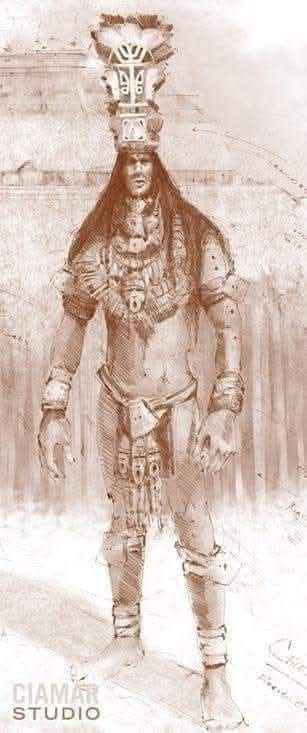The Breed of Giants that Existed in the Remote Past One of the biggest controversies related to ancient prehistoric cultures of North America revolves around what we call the Unique Physical Types (TFU). For the topic we will address below, these TFUs are skeletons of gigantic humanoid, often with hyper-elongated skulls, occasionally over or pathological dentures (including various reports of double or triple rows of teeth) and are usually discovered in funeral graves and cemeteries related to the Adena-Hopewell cultures, Archaic Civilizations, and the Southeastern Ceremonial Complex.Today it is common to observe how alternative history researchers tell us the story of the mass discovery of these beings throughout the 19th and 20th centuries. Historians, archaeologists and archaeologists have documented the discovery of Unique Physical Types throughout the United States, with a massive concentration found in the hills and excavations of the Ohio River Valley and along the Mississippi River.Such data can be consulted in histories of any county, municipality or state, as well as in anthropological literature belonging to or outside the Smithsonian Institution. Here are several examples: Kentucky: “From a grave on Edin Burrowes’ farm near Franklin, several human skeletons were exhumed, in May 1841, from a depth of more than 12 feet (about 3.5 meters), several human skeletals.”One of them, of extraordinary dimensions, was found among what appeared to have been two logs, covered with a wooden plank. Many of the bones were intact. The chin was too big to fit into the jaw, flesh, or any other part of a modern man. The femurs weighed six inches (15 cm) longer than any Simpson County man. “The teeth, arms, ribs and everything in general could probably be a giant of an ancient breed.”(Kentucky story, Lewis Collins)Jo Daviess County, Illinois: “The high risk graves have been dug nearly completely over the last two or three years.. In everything that has been opened the workers have found a grave in the center, about two and a half feet (about 75 cm), below ground level that had clearly been dug by the man’s hand… “The bones uncovered inside reveal a race of gigantic stature, with skeletons buried in a circle in a thirsty position around the grave, with legs stretched toward the center.”(La Historia de Jo Daviess County)”Near the original surface, 10 or 12 feet (3 to 3.5 meters) from the center (of the tomb), above its lower part, lying carefully on its back, was one of the largest skeletons discovered by the officers of the Office, its actual stature after taking measurements.” relevant proved to be between 7 and 8 feet (2 – 2.5 meters). It was all easily recognizable… “(12th Annual Report of Ethnology office)Kanawha Valley, West Virginia: “No. 11 is 35 to 40 feet (10.5 to 12 meters) at its base and about 4 feet (1.25 meters) tall.” In the center, 3 feet (90 cm) below the surface, there is a vault 8 feet (2.5 meters) long by 3 feet (90cm) wide. On the floor of this vault, among the decomposed fragments of tree bark that surround them, was discovered a complete skeleton, standing carefully on its back and with its head facing west… Nineteen feet (5.75 meters) from the highest part… among the remains of a bark coffin, another skeleton, whose height was 7.5 feet (2.30 meters) and measured 19 inches (50 cm) from shoulder to shoulder”. (12th Annual Bureau of Ethnology Report) “In the interior of the village of Brown stown, ten miles above Charleston and just below the birth of Lens Creek, there is another similar ancient burial site… In Browns town, not long ago, two skeletons were found together, one measuring approximately seven feet (2.15 meters) tall and the other belonging to a dwarf about four feet (1.20 meters)”.(History of the Great Kanawha Valley).Pictured: Digital sketch of a former Florida giant. Image courtesy of Marcia K. Moore, Ciamar StudioLouisiana: “In the same line of abnormality revolved around the discovery of a skull whose teething reached an unusual number of forty teeth, due to the existence of eight additional incisors… The nature of the skull discovered in the tomb of Larto, if compared with the ones found in other locations, is highly anomalous… The anomalies in this case cannot be attributed to an artificial disfiguration, because if so, their symmetrical development in relation to other parts of the skull would have been impossible…. “His impressive appearance could not have been the result of the use of vending or other external applications, but it had to be undoubtedly congenital.
